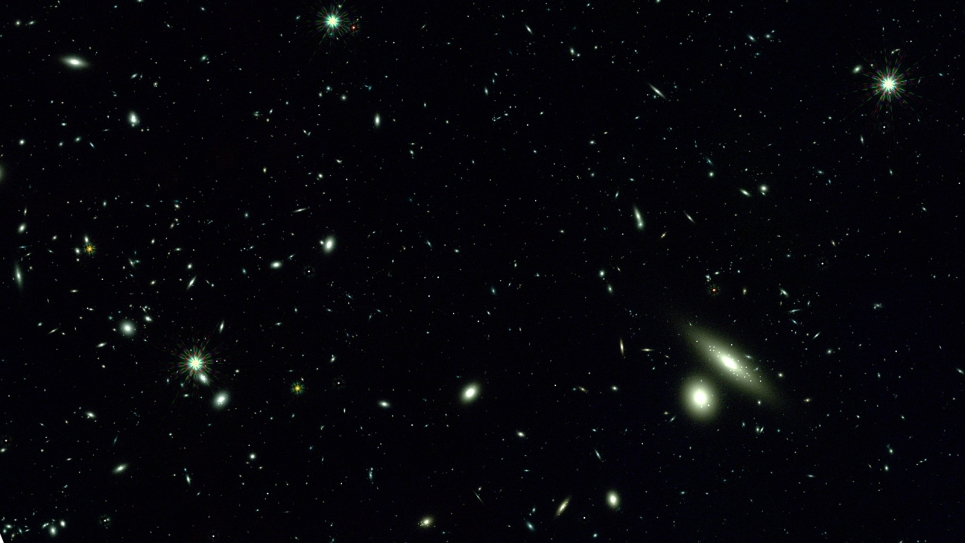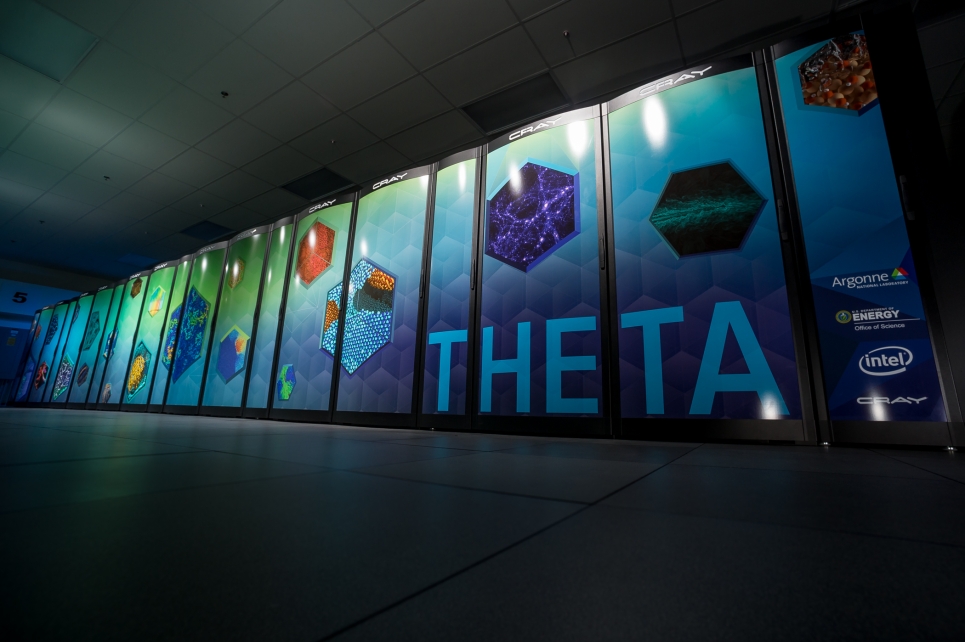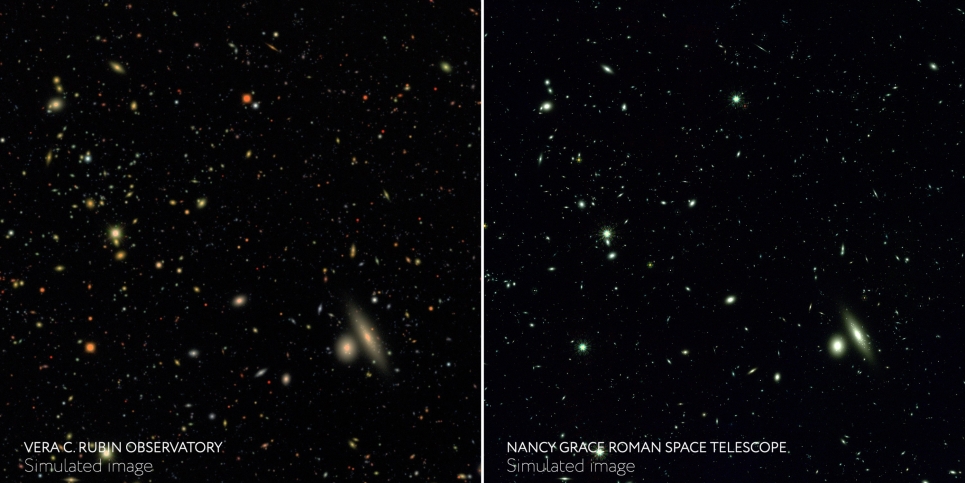Telescopic Teamwork
It took a large and talented team from several organizations to conduct such an immense simulation.
“Few people in the world are skilled enough to run these simulations,” said Alina Kiessling, a research scientist at NASA’s Jet Propulsion Laboratory (JPL) in Southern California and the principal investigator of OpenUniverse. “This massive undertaking was only possible thanks to the collaboration between the DOE, Argonne, SLAC, and NASA, which pulled all the right resources and experts together.”
And the project will ramp up further once Roman and Rubin begin observing the universe.
“We’ll use the observations to make our simulations even more accurate,” Kiessling said. “This will give us greater insight into the evolution of the universe over time and help us better understand the cosmology that ultimately shaped the universe.”
The Roman and Rubin simulations cover the same patch of the sky, totaling about 0.08 square degrees (roughly equivalent to a third of the area of sky covered by a full Moon). The full simulation to be released later this year will span 70 square degrees, about the sky area covered by 350 full Moons.
Overlapping them lets scientists learn how to use the best aspects of each telescope –– Rubin’s broader view and Roman’s sharper, deeper vision. The combination will yield better constraints than researchers could glean from either observatory alone.
“Connecting the simulations like we’ve done lets us make comparisons and see how Roman’s space-based survey will help improve data from Rubin’s ground-based one,” Heitmann said. “We can explore ways to tease out multiple objects that blend together in Rubin’s images and apply those corrections over its broader coverage.”
Scientists can consider modifying each telescope’s observing plans or data processing pipelines to benefit the combined use of both.
“We made phenomenal strides in simplifying these pipelines and making them usable,” Kiessling said. A partnership with Caltech/IPAC’s IRSA (Infrared Science Archive) makes simulated data accessible now so when researchers access real data in the future, they’ll already be accustomed to the tools. “Now we want people to start working with the simulations to see what improvements we can make and prepare to use the future data as effectively as possible.”
OpenUniverse, along with other simulation tools being developed by Roman's Science Operations and Science Support centers, will prepare scientists for the large datasets expected from Roman. The project brings together dozens of experts from NASA's JPL, DOE’s Argonne, IPAC, and several U.S. universities to coordinate with the Roman Project Infrastructure Teams, SLAC, and the Rubin LSST DESC (Legacy Survey of Space and Time Dark Energy Science Collaboration). The Theta supercomputer was operated by the Argonne Leadership Computing Facility, a DOE Office of Science user facility.
The Nancy Grace Roman Space Telescope is managed at NASA’s Goddard Space Flight Center in Greenbelt, Maryland, with participation by NASA’s Jet Propulsion Laboratory and Caltech/IPAC in Southern California, the Space Telescope Science Institute in Baltimore, and a science team comprising scientists from various research institutions. The primary industrial partners are BAE Systems, Inc. in Boulder, Colorado; L3Harris Technologies in Rochester, New York; and Teledyne Scientific & Imaging in Thousand Oaks, California.
The Vera C. Rubin Observatory is a federal project jointly funded by the National Science Foundation and the DOE Office of Science, with early construction funding received from private donations through the LSST Discovery Alliance.


